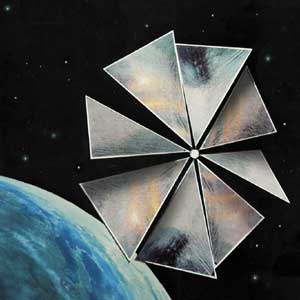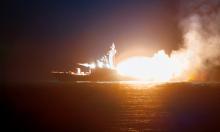Russian-US solar sail satellite project fails
The unique spacecraft, outfitted with a fan of solar sails, fell down in Russia's Far North
The fate of the Cosmoc-1 space probe outfitted with the solar sail is still unknown. The spacecraft was launched from a Russian nuclear submarine on Wednesday night. According to US administrators of the Kosmos-1 project, two surveillance stations intercepted a weak signal of the satellite. Russian specialists and the Pentagon say, however, that Cosmos-1 has not entered the Earth's orbit and most likely fell down in the area of Novaya Zemlya. 
The disappearance of the Cosmos-1 spacecraft has became the second major failure in the Russian space forces over only 24 hours. Molnia-M carrier rocket carrying a defense communication satellite, went off radar screens on June 21st. The rocket blasted off from the Plesetsk spaceport at 4:49 a.m. Moscow time. The spacecraft fell down in the Tyumen region of Russia on Tuesday morning.
After the disappearance of the Solar Sail satellite, the managers of the Cosmos-1 project addressed to the Pentagon with a request to determine the satellite's whereabouts. However, the US Air Force strategic command could not see the spacecraft, the press service of the California-based Planetary Sociery.
The Planetary Society expects to receive more information from the US Air Force command on Wednesday morning in California, which will be evening time in Moscow, RIA Novosti reports.
”If the Russian-US Solar Sail satellite had escaped destruction, it would have already started its fifth flight circuit. The satellite did not send any signals to Earth, which means that we lost it,” a spokesman for the Russian headquarters of the project said.
According to experts' estimates, the Solar Sail satellite fell down in the region of Novaya Zemlya, in the Far North of Russia. The breakdown apparently occurred because of the technical malfunctions in the engine system of the carrier rocket, a source with the Russian space structures told Interfax. The engine of the rocket's first stage stopped spontaneously during the 83rd second of the flight.
Russia's nuclear submarine, the Borisoglebsk, launched the spacecraft outfitted with the so-called solar sail on Tuesday night. In the event of a successful launch, the space probe was supposed to open the fan of fine solar sails coated with light-reflecting compound. The fan of sails is used to provide the probe with the power of the sun. The original power of the Solar Sail spacecraft would be very weak, but it would gradually grow until the 100-kilo craft could reach a very high speed, Newsru wrote.
The first launch of the Solar Sail spacecraft failed in 2001: the probe did not separate from the carrier rocket. The previous launch of the spacecraft was performed from the Russian nuclear cruiser as well.
Subscribe to Pravda.Ru Telegram channel, Facebook, RSS!





